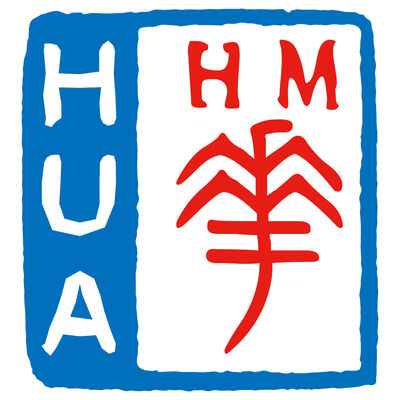预约演示
更新于:2025-09-09

Hua Medicine Ltd.
更新于:2025-09-09
概览
标签
内分泌与代谢疾病
小分子化药
疾病领域得分
一眼洞穿机构专注的疾病领域
暂无数据
技术平台
公司药物应用最多的技术
暂无数据
靶点
公司最常开发的靶点
暂无数据
| 疾病领域 | 数量 |
|---|---|
| 内分泌与代谢疾病 | 2 |
| 排名前五的药物类型 | 数量 |
|---|---|
| 小分子化药 | 1 |
| 未知 | 1 |
| 排名前五的靶点 | 数量 |
|---|---|
| glucokinase(葡萄糖激酶) | 1 |
关联
2
项与 华领医药有限公司 相关的药物作用机制 glucokinase激活剂 |
在研机构 |
原研机构 |
在研适应症 |
非在研适应症- |
最高研发阶段临床1期 |
首次获批国家/地区- |
首次获批日期- |
8
项与 华领医药有限公司 相关的临床试验NCT06498284
HM-002-1005 - A Phase 1, Randomized, Double Blind, Placebo Controlled, Single Dose, Safety, Tolerability, Pharmacokinetic, and Pharmacodynamic Study in Subjects With Type 2 Diabetes Mellitus
The purposes of this study are to:
* Evaluate the safety and tolerability of the study drug.
* Measure how much of the study drug (HM-002-1005) and its breakdown product get into the bloodstream, and how long it takes the body to get rid of them.
* Measure the amount of glucose (blood sugar) and a substance called C-peptide in the bloodstream after receiving the study drug.
Researchers will compare the study drug to a placebo (a look-alike substance that contains no drug).
Participants will:
* Stay 5 days and 4 nights or 6 days and 5 nights at the research site, and have a follow-up phone call 7 days after leaving the research site.
* Take one (1) dose of the study drug or placebo
* Have blood taken to measure the amount of study drug and its breakdown product and the levels of glucose and C-peptide
* Have safety tests such as vital sign, ECGs, and glucose measurements
* Evaluate the safety and tolerability of the study drug.
* Measure how much of the study drug (HM-002-1005) and its breakdown product get into the bloodstream, and how long it takes the body to get rid of them.
* Measure the amount of glucose (blood sugar) and a substance called C-peptide in the bloodstream after receiving the study drug.
Researchers will compare the study drug to a placebo (a look-alike substance that contains no drug).
Participants will:
* Stay 5 days and 4 nights or 6 days and 5 nights at the research site, and have a follow-up phone call 7 days after leaving the research site.
* Take one (1) dose of the study drug or placebo
* Have blood taken to measure the amount of study drug and its breakdown product and the levels of glucose and C-peptide
* Have safety tests such as vital sign, ECGs, and glucose measurements
开始日期2024-04-25 |
申办/合作机构 |
NCT04426708
An Open-Label, Paralleled Study of the Pharmacokinetics of HMS5552 Following a Single Oral Dose in Mild and Moderate Hepatic Impaired Subjects and Matched Healthy Volunteers
The objectives of this study is to access the pharmacokinetics and safety of HMS5552 in single dose in mild and moderate hepatic impaired subjects and matched healthy adult subjects.
开始日期2019-02-18 |
申办/合作机构 |
NCT04080609
A Single Dose, Open Label, Drug-drug Interaction Study to Investigate the Pharmacokinetics and Safety of Dorzagliation Administered Alone or in Combination With Rifampicin in Healthy Subjects
The purpose of this drug-drug interaction study is to investigate the impact of rifampicin on the pharmacokinetics of Dorzagliatin.
开始日期2018-03-27 |
申办/合作机构 |
100 项与 华领医药有限公司 相关的临床结果
登录后查看更多信息
0 项与 华领医药有限公司 相关的专利(医药)
登录后查看更多信息
324
项与 华领医药有限公司 相关的新闻(医药)2025-08-25
·研发客
//
日前在“中国医药创新界对话香港闭门交流会”上,香港药物及医疗器械监督管理中心(CMPR)筹备办公室主任陈诗涛先生透露了一系列利好政策,为内地创新药企赴港注册提供便利。
香港特别行政区政府自2023年11月起实施“1+”机制,即新药如能提供符合要求的香港本地临床数据并经本地专家认可,只需提交一个(而非原来两个)参考药物监管机构的许可便可申请注册。不过,这一次利好政策给出的审评尺度和改革措施更加宽松、灵活,包括以下几个方面:
其一,认可内地审评数据,简化注册流程。对于国家药品监督管理局(NMPA)已获批的创新药,在”1+”机制下,CMPR认可其获批时,只需运用内地的审评数据,结合香港某一疾病领域专家的推荐书即可,而无需在香港重新开展临床试验。
其二,内地临床试验数据可直接用于香港申报。若企业正在内地开展临床试验,即便尚未在香港开展相关试验,也可将内地试验数据及审评依据一并提交,用于药品在香港的申报。
其三,吸引内地产品率先在香港获批。凭借药品审评能力和卓越服务水平,香港CMPR实施“第一层审批”后,有望吸引内地企业直接在香港率先上市创新药。此外,CMPR正积极搭建类似CDE的沟通交流渠道,欢迎内地企业交流合作。
其四,积极加强与周边国家和地区合作,推动监管互认机制建设,签署合作备忘录。若香港能与东南亚国家达成药品监管互认,将为中国企业出海提供更多便利。
这一改革直击内地创新药企需求。根据规划,这个被称为CMPR的机构将于明年正式成立,并从同年开始分阶段实施“第一层审批”新药注册机制,预计到2030年全面实施。
拓展阅读
敲定“第一层审批”时间表!香港CMPR将实现自主、科学审批新药
港版FDA如何以观察员加入ICH?
这场中国创新药企与香港CMPR官员的直接对话,其渊源可以追溯至2023年初。当时,中国医药创新促进会执行会长宋瑞霖率团赴港考察,并与香港特别行政区特首政策组的黄元山博士进行沟通交流,在此次交流中,向香港特区政府提出了设立“港版FDA”的政策建议。
时隔两年,宋瑞霖身着黑色西装,再度带领团队与香港相关部门展开交流,而黄元山博士也与宋瑞霖面对面而坐。此次闭门会由中国医药创新促进会、香港特别行政区特首政策组、香港药物及医疗器械监督管理中心共同发起,香港海邻科技承办。正值2025年香港特别行政区行政长官施政报告发布前夕,各方共同探索香港如何凭借独特的体制机制优势,助力中国创新企业出海。
中国医药创新促进会资深会长兼首席专家 宋瑞霖先生
香港特别行政区特首政策组 黄元山博士
香港施政报告团队在过去一段时间,持续与内地的药企、海外和香港的大型药厂、海内外的生物科技公司和大学的研究团队会面,此次是首次在内地与近二十家内地知名药企会面,聆听他们的政策建议。在香港药物及医疗器械监督管理中心(俗称“港版FDA”)成立时间表于今年6月下旬公布后,香港卫生署助理署长陈诗涛作为香港药物和医疗器械监管中心筹备办公室主任也首次与内地产业界面对面座谈。
CMPR筹备办公室主任 陈诗涛
审批制度改革:从“1+”到“第一层审批”
据香港卫生署显示,自“1+”机制实施以来,已有11款新药通过该机制获批注册,其中5款已纳入医院管理局药物名册,部分药物价格下降三成。
华领医药是这一政策的探路者。其创始人兼首席执行官陈力博士分享道:“香港卫生署和监管中心办事效率非常高,我预计到2030年将有一大批内地生物技术公司的产品蜂拥在香港获批。回想2023年我们在香港洽谈时,当时中国产品去香港申报还是‘1+1’模式,很快变成‘1+N’ (N=named patients) 模式,现在叫‘1+’。”
华领医药创始人兼首席执行官 陈力博士
根据此模式,华领药业的全球首创新药华堂宁已在7月30日递交申请,3天后收到CMPR反馈提交补充材料意见。8月8号,华领医药确认补充材料内容,整个过程十分迅速。
华领医药集团运营副总裁曹蓓莉透露,去年12月,香港的PI陈教授带他们拜访陈诗涛主任,陈主任听取汇报后当场答复,依据新政策,只要持有中国颁发的首张药品上市证书,再加上当地医生专家的推荐,就可以申请在香港注册。
此次座谈上,陈诗涛介绍了CMPR筹备情况,并给大家带来一份路线图供参考。香港卫生署早在6月26日就已公布,CMPR将于明年正式成立,并从明年开始分阶段实施第一层审批。“香港的布局源于特首2023年的施政报告,报告提出要将香港打造成为国际医疗创新枢纽。其中,成立香港药械监管中心是重要一环。”
据陈诗涛介绍,CMPR未来重点工作包括:制定新法例及修订现行监管药剂制品的法例;持续提升专业能力;深化与本地、内地及国际监管机构的合作;配合《中医药发展蓝图》完善中药规管制度。“要实现这一目标,有两点很重要。第一,要全面提升甚至改革药械监管的系统和能力。同时,要加强人员培训,吸纳其他专才,采用国际标准和要求,更好地与国际接轨。第二,要与其他监管机构实现良好对接。”
就在上周,香港卫生署前往新加坡签署了MOU,加强了协作。
香港CMPR正在积极争取国际认可,目前已以观察员身份加入ICH,并积极参与会议,目标于2027年成为其监管机构成员。
陈诗涛坦言,实施过程中,最主要的挑战在于专业能力的构建及争取获得其他药监的认可和信赖。“我们定位是要成为国际权威监管机构,CMPR会积极与包括NMPA等全球具有国际化视野和经验的顶尖级监管人员共同合作。”
目前香港卫生署已有400多名员工负责药械监管的工作,希望中心成立时能扩充到500人,以增强能力、提高效率。计划用5年时间发展第一层审批能力,并与香港企业共同学习。“因为在过去两年实施‘1+’政策时,我们发现香港药企代表也需要学习如何申请‘1+’。”他说。
香港特区政府计划将CMPR打造成为国际权威机构,不仅获得国际认可,更成为国际倚赖的权威。陈诗涛表示:“如果做得好,我们绝对能为国家做更多贡献。能为国内企业和跨国企业提供更多选择,开辟新的市场。此外,近几年一些新兴市场,特别是中东、南美和东南亚,发展迅速,对创新药需求大。”
“另一个优势是,在一国两制下,我们能得到国家支持,更好地扮演国际超级联络人的角色,帮助国内企业将香港作为跳板,通过香港审评审批,与其他药监机构对接,更快地让产品出海并被当地药监认可,拓展更多市场。”
内地企业对CMRP的建议
在交流会上,多位中国医药创新领域的专家和企业代表也发表了看法。
宋瑞霖强调了香港在药品监管国际化中的独特地位:“一国两制政策让香港在药品监管的国际体系中可以拥有独特地位。支持香港连接内地和世界市场是中央政府的倡导的既定方针。”他呼吁香港在药品监管国际化方面发挥引领作用,目标树立的应该更加高远,发挥香港对国际语言、国际规则更为熟悉的优势。“因为,没有药品监管的国际化,就不可能有产业的国际化。”
中国药促会驻会副会长 冯岚女士
中国药促会驻会副会长冯岚女士则对CMPR寄予厚望:“它不仅仅是一个简单的技术审评机构,更有望成为中国医药创新企业国际化的规则制定者。”她期待香港能够利用自身优势,为内地创新药企提供更多支持。
对于内地创新药企业来说,香港CMPR代表着新的出海通道。
贝达药业董事长兼首席执行官丁列明博士分享了案例也提出了实际问题。他们自主研发的肺癌靶向药恩沙替尼,于2022年获得国家药监局批准上市,去年获得美国FDA批准,随后申请了澳门药品批准。
“目前我们在香港遇到了审批瓶颈:如果使用中国内地药品文号,会面临PIC/S相关问题;如果使用FDA文号,又需要优先审批或突破性治疗认定,两个文号使用起来都存在障碍,导致该药品目前无法在香港上市。因此,我们希望香港在药品审批方面能够优化流程,做好政策衔接。”
贝达药业董事长兼首席执行官 丁列明博士
前FDA专家、埃格林医药董事长杜涛博士从另一个角度提出了见解。他认为,目前新加坡是全球亚裔疾病临床研究的主要基地。这主要是由于新加坡较小,入境签证易于管理。可以入选附近国家的病人。而有些疾病主要发生在亚裔人口,例如鼻咽癌。而香港在地理位置、人口规模,医学水平,以及国际交流等方面与新加坡相似。因此,完全有能力成为全球亚裔疾病临床试验的重镇。
前FDA专家、埃格林医药董事长 杜涛博士
信立泰药业董事长叶宇翔认为,香港在中国乃至全球都占据极为特殊的地位。中国公司期望香港通过加强监管建设,将影响力辐射至东南亚乃至更广阔的区域。“毕竟,信立泰的产品都已具备申请美国FDA审批的实力,只要香港药监局明确审评审批要求,我们企业一定能做到。”
信立泰药业董事长 叶宇翔
亚虹医药创始人兼CEO潘柯博士与香港的结缘可追溯至2001年。彼时,他从美国归来,受和记黄埔集团邀请,在李嘉诚投资的和黄医药担任研发总监。潘柯认为,中国公司在向东南亚国家申报上市时,若能通过香港搭建沟通桥梁,将极大提升效率。香港凭借一国两制的制度优势及公务员的专业精神,可能办事更具效率。因此,提前与东南亚国家达成共识,实现数据互认,将对中国企业出海起到帮助。
亚虹医药创始人兼CEO 潘柯博士
晨泰医药CEO张勇博士发现,自2015年大量获得NMPA批准的国产创新药对于香港民众的获益非常有限。至今,很多香港人还在使用具有人种差异的欧美老药,且价格昂贵。他开始关注“1+”,并希望能在将来让自己研发创新产品惠及于香港民众。
不过,他认为香港有更重要的意义。“仅仅着眼于香港700万人的市场,内地企业和专家无需投入如此多的时间和精力。” 张勇认为,“但如果香港与东南亚国家实现了互认,对于中国公司就有更多出海的便利。”
晨泰医药CEO 张勇博士
上海银诺医药也与香港颇有渊源。就在近日,公司刚刚在香港成功IPO,且市场表现良好。上海银诺医药高级副总裁兼首席商务官徐文洁介绍道,他们的产品今年1月获NMPA批准,7月1日在澳门获批。接下来,公司希望运用“1 + ”政策,借助香港专家的临床用药经验,在香港获批。
银诺医药高级副总裁兼首席商务官 徐文洁
科兴制药全球药品商业化已积累了25年经验,业务覆盖欧盟成员国在内的70个国家和地区。该公司副总经理邵珂博士在会上发言表示:“若药品已获SRA(欧盟、美国、日本、英国、加拿大等国家或地区的药品监管机构)批准,在新兴市场国家(如沙特等)的准入流程可相对较快完成。”基于此,他建议香港药品监管部门提升监管标准,实现与SRA标准药监机构的互认。
科兴制药副总经理 邵珂博士
此外,美国FDA和欧盟EMA正在推进监管改革,如运用AI缩短审批周期、减少动物实验,并对生物类似药的临床研究要求进行优化。邵珂希望香港特别行政区政府参考这些先进经验,推动本地药品监管体系升级。
“香港CMPR做的这些工作,也绝不是仅仅为了香港,而将着眼于整个国家的生物制药产业,希望能为国家多做些贡献。”陈诗涛对上述企业代表的发言作出了回应。
呼吁从“好药港用”到“好药港快用”
尽管香港CMPR建设和1+机制取得积极进展,但与会代表也指出了当前在实际操作层面面临的一些挑战和改进空间。
以百济神州的百泽安为例,这是一款PD-1抗体,但目前并不适用现有的“1+”政策。该产品在国内已有13个适应症,且全部纳入医保,覆盖了众多重要肿瘤。然而,在香港,该产品仅有5个适应症。鉴于“1+”主要针对新产品的获批,有企业代表希望探讨是否能将百泽安也纳入该政策适用范围,或者考虑在香港拓展其适应症,并将此纳入“1+”政策的考量之中。这样可以更快惠及香港患者。
企业代表希望,“1+”政策能提供更具体的指引,如明确资料要求、审查流程、时间进度标准等,为企业提供SOP指导。同时,建立回馈机制,使企业在制度透明的情况下优化申请流程。建议推动香港与大湾区临床研究机构开展合作。依托“港澳药械通”政策,在大湾区医疗机构建立临床机构备案清单。此后,香港CMPR在审评临床数据时,可直接采用大湾区高水平临床机构的数据,为内地企业在港注册新产品或拓展适应症提供支持。同时,内地开展临床试验时可将香港纳入研究范畴,即便病例数量较少,如仅十余例,该数据亦可对产品未来在港上市起到加速作用。
此外,关于GMP方面,目前NMPA正在申请成为PIC/S成员。随着CMPR的建立,香港将具备独立的审评审批能力。希望香港FDA能到国内工厂进行GMP认证,并与“1+”政策相结合,形成临床审批与GMP审批的快速通道。
香港海邻董事马骏一是一名扎根香港医药创新行业的从业者,也是中国药促会香港代表,近年来,他帮助内地企业和产品到香港落地。他在会议上呼吁出台政策推动从“好药港用“到“好药港快用“并针对2025年特首施政报告提出两条建议:首先,香港卫生署组织专家制定临床急需药品白名单,对纳入白名单的药品,港府各部门协同开辟绿色通道加快各环节审批。
香港海邻董事 马骏一(左一)
“好药港用”是香港市民的热门话题,港府也连续出台了一系列政策鼓励优质创新药在港注册,但因具体操作过程中仍存在若干堵点,实际成效并不明显,以“1+”政策为例,推行两年有11个产品获批,包含6个品种药物,其中3个品种(共6个产品)是内地生产。但这3个品种有2个是和黄,1个是外国药企在内地设厂生产。
创新药获“1+”批准要满足几个前置条件(一张其他国家药品注册证+香港本地数据+PIC/S GMP),获取本地数据主要有在香港开展临床试验或通过指定患者用药计划(NPP)两种途径。但目前中国创新药企在香港开展临床试验药品还很少,NPP实际操作过程也较为繁琐,需本地团队操作,这形成恶性循环,导致通过“1+”机制注册药品数量极少。大多药企也因组建香港团队的高成本,而选择暂时不进入香港市场,导致香港患者无法同步享受到近年来中国创新药产业发展的福利。
其次,关于“香港如何发挥所长,助力国家所需”,马骏一建议香港卫生署建立机制:委托第三方机构加速对内地生产药品的GMP审评。卫生署2016年就加入了PIC/S协作组,具备独立审查的能力,但是受到体系流程和人力与资源的限制,2023 及 2024年香港卫生署只进行3次香港境外GMP审查,其中仅1次在中国境内。目前,获得PIC/S GMP审查通过,是香港及一带一路沿线国家注册的前置条件。当下,加速中国药企通过PIC/S GMP审查,助力中国创新药出海正是“香港发挥所长,助力国家所需”的具体事项。
宋瑞霖建议,香港在建立独立自主的审评机制方面还有加快的空间。当前,卫生署正在着手成立香港的药品监管机制,但很多药品监管相关工作不必等到相关机构正式成立后再开展。香港需要明确建立GCP和药品检查合作计划(PIC/S)认证制度,当下最重要的是将其覆盖扩展至粤港澳大湾区。“目前香港或许在这一步上仍存顾虑,希望未来可以放开手脚、大步迈进。”
香港生物医药创新协会会长 卢毓琳教授
最后,香港生物科技之父、香港生物医药创新协会会长卢毓琳教授意味深长地说:“这些年,香港特区政府为生物科技产业的发展付出了很多的精力和心血,例如港版药监局CMPR和第三所医学院的布局等,这些具体事项都离不开特首政策组团队和卫生署团队,以及其它香港特区政府部门的共同努力,我们最终的目的,就是希望可以更好地服务内地企业实现出海,同时,海外的企业也可以通过香港进入内地市场。
当然,我也真诚地希望,未来,在政府和业界的共同努力之下,香港生物科技产业的发展可以更好地为内地企业出海搭建桥梁,这不仅是责任,也是香港生物医药产业未来发展的重大战略机遇。”
特别鸣谢:中国医药创新促进会、香港特别行政区特首政策组、香港药物及医疗器械监督管理中心,香港海邻科技
其他嘉宾对香港生物科技发展提议(向下滑动查看)
全体与会人员合影
香港特首政策组组长黄元山博士:
香港正积极发挥为生物科技产业融资的作用,今年上半年已有10家生物医药企业在香港上市,共集资160亿,下半年预计还有40家企业将在港上市。此外,特区政府还有其他投入,例如我们拨款60亿资助大学和科研机构建立生命健康研发院,这是科研领域的五大研发院之一。同时,2022年成立的港投公司,在已投资的100多家公司里,若按投入资金计算,生命科技项目占比达到16%,反映了特区政府在生命科技领域的坚实投入。展望未来,我们希望推动香港企业在大湾区发展壮大,这其实是一个双向奔赴的过程,香港不仅吸引更多优秀内地企业来港发展,同时香港企业也能在大湾区茁壮成长。对于内地企业出海的态势,无论是生物医药行业还是其他行业,香港将会继续发挥好自身平台功能。
香港贸发局大湾区和华中首席代表曾沂靖:
通过深港及大湾区内地制度创新,可以缩短企业新药研发、临床、上市周期,河套地区是切入点,香港和深圳园区已同步成立大湾区临床试验中心和所,需加大两地临床试验结果样本互联互通并吸引更多医院参与,特别是借助在大湾区内地城市设立的港资背景医院,如香港大学深圳医院、和睦家医院,加快新药的临床及上市。
香港改革上市制度,18A针对生命健康科技企业,18C针对特专企业。首家通过18C上市的企业-晶泰科技,就来自河套。晶泰科技以人工智能加速新药研发,最近获美国大单后股价市值大涨。但整体而言,创新药研发周期长、烧钱多,投资者不愿投,金融支撑不足,政府资金是否可以发挥更大作用?比如,深港乃至大湾区各市能否联合成立政府的母基金、产业引导基金,并撬动更多社会资本,为生命健康科技企业提供长期的耐心资本,解决生命健康科技融资难的问题?甚至,在企业上市时作为基石投资人,充分发挥政府耐心资本的作用,避免破发打击私人资本积极性,助力企业发展。
RDPAC前执行总裁康韦:
当前跨国企业重点临床试验多集中在中国内地,选香港作为临床试验中心的情况少见。中国市场大、临床试验能力强,跨国企业倾向在中国首发新产品,香港吸引力不足。引发跨国企业关注大湾区发展的关键在于制度创新,以药械通政策为例,打造全球创新药早期准入战略高地需突出“快”的特点。
我们分析药械通政策实施5年情况,粤港澳大湾区引进约100多个产品,数量不及海南博鳌,跨国企业总部常讨论选择大湾区的原因。不过,大湾区市场资源充足,是中国规模最大的医药市场。但目前跨国企业70%的临床试验在北京、上海开展,广东较少。当下真实世界研究成趋势,能提高研发效率,但面临数据质量和共享问题。香港政府医管局数据体系完善,各方可探索广东与香港数据协同,我们愿推动广东和香港数据 吸引跨国企业开展全球创新药械大湾区早期准入后的真实世界研究,为加快产品在中国大陆的注册及上市后的临床应用提供参考。
第二条建议涉及专科发展。罕见病商业价值低但社会价值高,部分跨国企业因药物在中国大陆上市效果不佳、投资成本高,甚至不将一些药物引入大陆,细胞基因治疗领域多数国外企业也未进入大陆市场。可利用大湾区医疗资源优势,与香港共建亚洲治疗中心,覆盖中国和亚太患者。香港也可借助大湾区将临床早期研究转化生产,面向国内外市场,双方还可针对区域高发疾病开展针对性研究。
海昶生物创始人赵孝斌博士:
香港应发展有别于大陆的产业,发挥自身独特优势,解决监管或产业难点痛点,这是其最大竞争力。香港具备法治、国际化、人才、效率等优势,还是药品检查合作计划(PIC/S)成员。香港不宜在生产成本和规模上与大陆竞争,而适合打造前沿技术转化基地,先进治疗医药产品(ATMP、如核酸药物、基因治疗等)等创新颠覆性领域建立国际化转化CDMO开放平台,这能发挥当地5所全球百强大学的人才优势,契合香港实际。
在GCP方面,香港开展临床试验高效且数据认可度高,其原与英联邦国家有诸多可互认内容,如今可进一步拓展联盟,联合中国大陆部分机构及东南亚国家,减少企业重复临床试验。当前临床试验和药品制造成本高昂,降低这两方面成本可提升企业竞争力。
香港海邻执行董事葛永彬先生:
对未来计划出海的企业,GCP合规、临床数据互联互通及真实世界数据应用与合规是重要课题。香港拟设立的药品监管机构可发挥重要作用,如独立认证头部临床试验机构,让这些机构数据及PI资质获国际认可,节省企业成本。虽目前数据可能难立即获FDA、EMA单独认可,但可先拓展东南亚、巴西、中东等市场。而海邻是在宋会长的鼓励下成立的一家规模较小的公司,在此也要感谢陈力总的支持。期望能在助力国内企业“走出去”的过程中发挥更大作用,做一些更具实际意义的事情;同时,也愿意协助香港政府开展政策解读相关工作。公司取名“海邻”,其寓意源自诗句“海内存知己、天涯若比邻”,希望与在座的各位朋友携手共进,走向更广阔的天地。
贝达药业董事长兼首席执行官丁列明博士:
香港在医药创新政策推动和经验分享上可向中国内地取经,其发展生物医药产业条件优越,资本和人才优势突出,但发展势头不及大陆,两地加强经验交流、共推产业发展很有意义。利用香港优势建区域性治疗中心的建议很有价值,该中心既能服务本地患者,在基因、细胞治疗等领域吸引全球的病人。前两天,中东一国家一副总理关注到我们干细胞治疗一型糖尿病研究报道,派人来调研,并提出在当地设研发或治疗中心,但我认为设于香港更具地优势,可辐射周边,且治疗用患者自身细胞,可作为医疗技术应用。我们要发挥香港国际中心优势辐射全球,重点发展需治疗中心支撑的领域,为产业发展带来多维度价值。
编辑 | 姚嘉
yao.jia@PharmaDJ.com
总第2550期
访问研发客网站,深度报道和每日新闻抢鲜看
www.PharmaDJ.com
申请上市引进/卖出核酸药物
2025-08-12
·药咖荟
CBIITA联合体常务副理事长兼秘书长郑晓南、华领医药董事长,CBIITA联合体副理事长陈力、上海医药前执行董事、总裁,成都海枫生物首席战略顾问,CBIITA交易与并购专委会顾问左敏、优势资本管理合伙人,CBIITA交易与并购专委会执行主委孙健等一行领导考察CBIITA联合体与优势资本在上海共建的生物医药产业创新转化基地——启星智谷及创谷项目,探讨交流合作,聚集产业资源,赋能创新发展。
上海医药前执行董事、总裁,成都海枫生物首席战略顾问,CBIITA交易并购专委会顾问左敏表示,上海基地的选址区位很好,周边产业集聚,园区品质很高。成都海枫生物医药基地可以与CBIITA-优势上海基地探讨共建东西部产业协同创新孵化基地,借助成都海枫-海圻的产业公共平台,双方构建筛选、孵化、转化、投资的全链路产业创新赋能。
CBIITA联合体副理事长,华领医药董事长陈力回顾了中国创新药的行业发展历程,2004年陈力博士从罗氏美国研发中心回国建立罗氏中国研发中心,借鉴国际经验,一步步推动在中国建立适合创新药研发的基础规范和生态环境,GMP生产标准、GCP临床实验标准、MAH制度、科创板上市机制等,让中国从缺医少药、没有创新药的客观环境,用30年发展,走过了西方100年的历程,成为了全球生物医药创新的重要参与者。陈力博士作为行业发展的推动者,参与了很多制度创新和规范建立,从MAH上海试点到国家标准规范的建立。陈力博士指出,CBIITA联合体作为中国产学研合作“十大好平台”之一,同时也是生物医药领域唯一获此殊荣的平台,进驻上海,应当融入上海生物医药产业发展规划,服务浦东的产业发展,助力浦东打造全球创新药械首发地,助力上海打造全球科创中心。
CBIITA联合体交易并购专委会执行主任委员,优势资本管理合伙人孙健指出:CBIITA联合体可以聚集国家级专家智库,做好与上海市政府的合作,融入上海生物医药“十五五”产业规划,做好顶层设计。面向上海的“全球科创中心”的创建战略确立我们基地的功能重心,如打造CBIITA国际合作的“国际化总部”。发挥优势资本在科创项目投资共创的经验,协同科学家进行深度项目梳理。同步以早期投资方式参与到项目的种子轮、天使轮,从资金、人才、市场和资本运作等多维度进行成长赋能。面向成长型生物医药企业,提供产业投资,协同业务合作、交易并购、上市等快速发展通道。构建“从IP到IPO”的全链路投资赋能服务生态。
CBIITA联合体常务副理事长兼秘书长郑晓南指出:中国生物医药的创新发展已经跻身世界前列,许多企业正通过License-out、NewCo、并购、平台化及联合出海等多种模式,积极构建全球运营体系,努力在国际市场中找到新的增长路径和发展空间。仅2025年一季度,中国创新药交易数量75笔,交易总金额369亿美元,占全球的总额55%。之前生物医药行业冷却了2-3年,积累了很多高价值低价格项目,进入了投资窗口期,优势资本的投融资能力结合CBIITA的产业洞察和集聚能力,可以一起寻求优质项目,投早、投小、投新。
成都海枫生物战略顾问、CBIITA交易与并购专委会副主委洪涤回顾了上海生物医药产业发展和产业空间载体的“爆发式”增长历程。随着MAH制度的出台,以及科创板退出机制的设立,在中国打开了创新药研发的融资通道,疫情又带动了强烈的市场需求,因此行业需求井喷式增长,作为上海生物医药集聚地的张江曾经是一房难求。为了防止产业“外流”,上海市规划了“三级岛链”,为了让生物医药研发制造有足够发展空间,大量的园区投入开发建设;但行业却随着科创板的关闭、医保控费等,在投资、市场双向受挫,所以行业迅速遇冷,而园区业主也陷入“内卷”之中。行业“过山车”式的发展也呈现出专业服务的滞后,园区运营除了提供空间载体,更需要深入行业,集聚产业资源的创新赋能服务,这也是CBIITA平台的优势所在。
CBIITA科技金融专委会秘书长徐松亮建议,基地发展可以更多地融入上海、浦东,尤其是金桥的发展定位,来确定自身的空间业态方向。就项目而言,地理位置很好,交通便利体量适中,且是工业用地,能够承载研发小试、中试生产。建议可以考虑和大学联动做产学研转化,如上海理工大学,是上海唯一设有医疗器械学院的高校,也有很多医工交叉联合培养单位,学院有很多研究成果,距离基地车程仅14分钟,有很强的协同创新可行性。
优势一度董事长曹清介绍了一度AI研选大模型及招商智能体的概况,以及针对生物医药的行业特性,通过AI来构建产业赋能服务、促进投资项目研选、发掘产业招商线索的构想。在上海基地将通过CBIITA产业聚合的平台效应,优势一度AI数智底座及智能产业链寻源系统构建,以及优势植未产业基地运营服务,构建系统化的产业聚合赋能服务,深度聚合产业资源,充分活化平台成员,“飞人、飞地、飞资本”,构建生物医药产业赋能生态闭环。
优势资本合伙人、优势植未董事总经理苏琼琼表示,生物医药从研发创新到生产制造再到市场流通,产业链很长,上海作为国际大都市承载研发创新、国际合作的龙头,周边城市落地生产制造是跨区域产业协同的大势所趋。优势植未为优势集团旗下的产业基地平台,集成“基金+基地+产业”提供综合落地解决方案,在各位专家的指导下尽快做好上海基地的战略定位和落地运营,整合产业平台和资本工具,协同做好跨区域产业布局联动。
其他来访的专家领导也纷纷为基地建设和园区发展提供了宝贵的建议,更好的融入政府产业规划、找准功能定位,更好的联动周边高效促进产学研转化,更加坚定信心,完善服务,在好的空间产品基础上叠加赋能服务来吸引优质项目落地。相信CBIITA与优势资本共建的生物医药产业创新转化基地一定能够成功运营,聚合产业资源,赋能创新发展。
【CBIITA·优势 | 上海基地选址】
CBIITA联合体上海基地位于浦东金桥城市副中心核心区,作为国务院批准的第一个国家级出口加工区,周边大型外资企业集聚。同时,该片区也是上海生物医药产业规划“1+5+X”布局中“1核”——张江生物医药创新引领核心区辐射范围中,最靠近城市中心的区域,紧邻碧云国际社区、金桥城市副中心核心区、商业、生活配套完善,交通便利。来访专家及领导充分认可基地的区位价值。
【CBIITA·优势 | 上海基地概况】
配套功能空间:上海基地将打造CBIITA联合展厅,集聚展示CBIITA联合体、优势资本及生态合作伙伴的创新技术、项目、资源及合作成果。搭建公共服务平台:项目路演大厅、设立临床加速服务站:医院、PI合作专区;构建创新转化项目库。
产业承载空间:启星智谷作为研发生产基地,整体约2万平米的工业厂房,具备生物医药小试、中试生产条件。
启星创谷整体约1万平米,独栋研发园区,适合打造基于平台赋能、业务协同的研发中心,同时毗邻三甲医院——华山医院东院,可以协同打造研究型康复医疗机构或创新药研发中心。
本次会议的参会人员:
CBIITA联合体:
左 敏 上海医药前执行董事/总裁、成都海枫生物首席战略顾问、CBIITA交易并购专委会顾问
郑晓南 CBIITA联合体常务副理事长兼秘书长
陈 力 华领医药董事长、CBIITA联合体副理事长
徐松亮 CBIITA科技金融专委会秘书长
吴 君 新华社上海证券报、资本市场服务中心副总监
洪 涤 成都海枫生物战略顾问、CBIITA交易与并购专委会副主委
刘 烨 CBIITA科技金融专委会执行秘书长、交易与并购专委会副主委
郑欣怡 CBIITA联合体副秘书长
芮 露 CBIITA 联合体秘书
优势资本:
孙 健 优势资本管理合伙人、优势禄展董事长
苏琼琼 优势资本合伙人、优势植未董事总经理
曹 清 优势一度董事长
徐 斌 优势资本合伙人
罗高伟 优势禄展执行总经理
温瑞明 优势植未运营总监
星丽峰实业:
韩 峰 星丽峰董事长
黄信叶 星丽峰总经理
汪亚林 招商总监
END
<
· 往期回顾
>
△ 聚势赋能 引领未来 | 中国生物医药产业链创新转化联合体2025年首期理事会在苏州圆满举行(上)
△ 聚势赋能 引领未来 | 中国生物医药产业链创新转化联合体2025年首期理事会在苏州圆满举行(下)
△ 金融活水 破局医药投融资难题:CBIITA中国生物医药科技金融与投融资论坛成功举办!
△ CBLA精品创新药资产交易论坛第2期成功举办!
△解资源整合与价值再造规律,推动技术市场与资本市场融合 | 未来行-CBIITA中国生物医药产业交易与并购论坛圆满落幕!
▲点击图片了解 《聚焦“国之大者”CBIITA 联合体荣获“中国产学研合作十大好平台”》
更多优质内容,欢迎关注
媒体合作
投稿转载/资料领取/加入社群 请添加药小咖
与/智/者/同/行 为/创/新/赋/能
2025-08-07
·药研发
「 本文共:13条资讯,阅读时长约:20分钟 」
行业动态
1.百济神州2025年上半年实现营业总收入175.18亿元,同比增长46%,历史性扭亏为盈。营业利润7.99亿元,归母净利润4.5亿元。核心产品百悦泽®(泽布替尼)、百泽安®(替雷利珠单抗)收入激增驱动业绩突破。公司上调全年营收预期至358亿-381亿元,毛利率目标80%-90%,并首次预告全年经营现金流转正。
2.江苏生物药分段生产试点突破。盛迪亚生物“瑞康曲妥珠单抗”(ADC药物)成为全国首个获批分段生产的抗体偶联药物,解决小分子生产线缺失问题,加速产业化。
3.前7月全国49个创新药上市,江苏占14席。2025年1-7月全国获批创新药数量达49个,江苏以14个占比近30%,生物医药高新技术企业近3000家,产业生态全国领先。
肿瘤治疗与抗体药物
1.恒瑞医药两款创新药上市。硫酸艾玛昔替尼片(活动性强直性脊柱炎)和苹果酸法米替尼胶囊(复发宫颈癌)获批,恒瑞累计研发投入达460亿元,90余款创新药在研。
2.江苏先声抗血管生成药物获批。注射用苏维西塔单抗获批上市,成为我国首个适用于“铂耐药”卵巢癌全人群的抗血管生成药物,大型临床研究证实其可显著延长患者生存期。
AI制药与技术创新
1.华润医药AI平台加速肿瘤药研发。旗下双鹤润创科技打造AI驱动药物研发全链条平台,核心项目Fascin蛋白抑制剂(全球首款抗肿瘤转移药)仅用3年推进至Ⅱ期临床。
2.分子之心升级AI蛋白质设计平台。MoleculeOS平台集成多模态AI模型,实现超高精度蛋白质动态设计,支持生物学家通过对话式AI生成高价值分子,已在创新药设计中验证。
细胞与基因治疗
1.诺华Zolgensma基因疗法申报中国上市。全球首个脊髓性肌萎缩症(SMA)基因疗法向CDE提交上市申请,基于AAV载体技术,有望惠及6个月以上患者。
2.优瑞制药Sanfilippo综合征基因疗法迎FDA审批。UX111 (ABO-102) 的生物制剂许可申请将于8月18日接受FDA决议,针对罕见病Sanfilippo A型综合征。
神经科学与罕见病
1.FDA将审议阿尔茨海默病新剂型。Leqembi皮下自动注射器生物制剂许可申请将于8月31日接受FDA决议,用于早期阿尔茨海默病周剂量维持治疗。
2.PTC公司弗里德里希共济失调新药将迎FDA决议。口服药物瓦替喹酮(vatiquinone)用于儿童及成人弗里德里希共济失调治疗,FDA决议日期为8月19日。
技术前沿
1.晶泰科技分子胶平台突破“不可成药”靶点。结合AI预测与自动化合成技术,加速靶向RAS、Myc等传统“不可成药”靶点的分子胶开发,平台已与DoveTree达成专项合作。
2.AI虚拟疾病生物学家“元生”锁定肝癌新靶点。临港实验室开发的AI系统“元生”自主发现GPR160为肝癌治疗新靶标,实验证实其具有“直接杀伤+免疫调节”双效机制,为精准治疗开辟新路径。
股市资讯
8月6日A股医药公司涨幅TOP 3
博瑞医药(688166.SH) +9.96%
康希诺(688185.SH) +6.13%
东诚药业(002675.SZ) +3.77%
8月6日A股医药公司跌幅TOP 3
翰宇药业(300199.SZ) -8.91%
美诺华(603538.SH) -5.69%
德展健康(000813.SZ) -5.36%
8月6日港股医药公司涨幅TOP 3
晶泰控股(02228.HK) +15.00%
华领医药-B(02552.HK) +4.62%
歌礼制药-B(01672.HK) +2.35%
8月6日港股医药公司跌幅TOP 3
微创医疗(00853.HK) -3.20%
复星医药(02196.HK) -2.15%
康希诺生物(06185.HK) -1.83%
评审动态
8月6日新药上市申请NDA
8月6日新药临床试验申请IND
END
财报申请上市基因疗法抗体药物偶联物
100 项与 华领医药有限公司 相关的药物交易
登录后查看更多信息
100 项与 华领医药有限公司 相关的转化医学
登录后查看更多信息
组织架构
使用我们的机构树数据加速您的研究。
登录
或

管线布局
2025年12月18日管线快照
管线布局中药物为当前组织机构及其子机构作为药物机构进行统计,早期临床1期并入临床1期,临床1/2期并入临床2期,临床2/3期并入临床3期
临床前
1
1
临床1期
其他
1
登录后查看更多信息
当前项目
| 药物(靶点) | 适应症 | 全球最高研发状态 |
|---|---|---|
HM-002-1005 ( glucokinase ) | 2型糖尿病 更多 | 临床1期 |
Fructose Kinase Inhibitor(Hua Medicine) | 代谢性疾病 更多 | 临床前 |
多格列艾汀 ( glucokinase ) | 2型糖尿病 更多 | 无进展 |
登录后查看更多信息
药物交易
使用我们的药物交易数据加速您的研究。
登录
或

转化医学
使用我们的转化医学数据加速您的研究。
登录
或

营收
使用 Synapse 探索超过 36 万个组织的财务状况。
登录
或

科研基金(NIH)
访问超过 200 万项资助和基金信息,以提升您的研究之旅。
登录
或

投资
深入了解从初创企业到成熟企业的最新公司投资动态。
登录
或

融资
发掘融资趋势以验证和推进您的投资机会。
登录
或

生物医药百科问答
全新生物医药AI Agent 覆盖科研全链路,让突破性发现快人一步
立即开始免费试用!
智慧芽新药情报库是智慧芽专为生命科学人士构建的基于AI的创新药情报平台,助您全方位提升您的研发与决策效率。
立即开始数据试用!
智慧芽新药库数据也通过智慧芽数据服务平台,以API或者数据包形式对外开放,助您更加充分利用智慧芽新药情报信息。
生物序列数据库
生物药研发创新
免费使用
化学结构数据库
小分子化药研发创新
免费使用